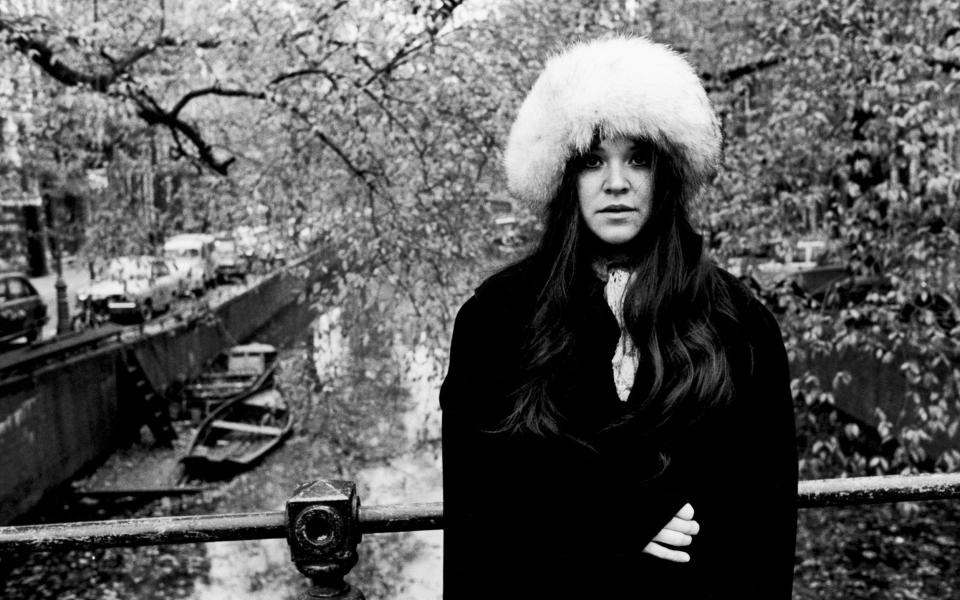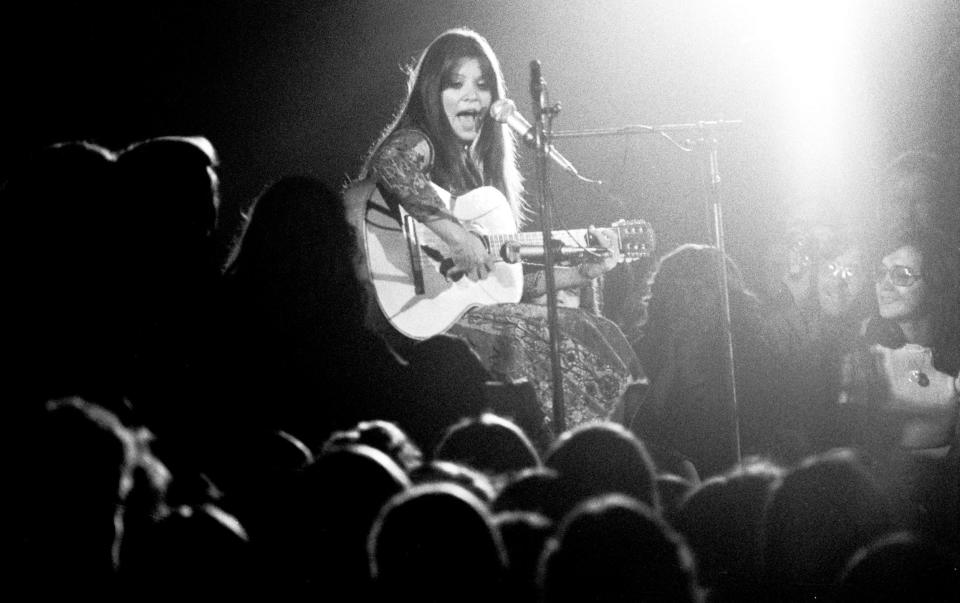Melanie, singer and songwriter whose career took off at one o’clock in the morning at Woodstock – obituary

Melanie, who has died aged 76, was a singer and songwriter who made her name at Woodstock before becoming best known for two songs, What Have They Done to My Song Ma, which was covered by a variety of musicians including Nina Simone, and Brand New Key – “I’ve got a brand new pair of roller-skates” – which was famously parodied in the Wurzels’ UK No 1 The Combine Harvester.
“It was the bane of my existence for a few years,” she said of Brand New Key, whose sense of childlike innocence led to many dismissing it as a novelty hit (though others saw it as teeming with sexual innuendo, which she denied). She composed it as a slow blues number, she recalled, but sped it up to make it more commercial.
“I wrote it in about 15 minutes one night,” she said. “I thought it was cute; a kind of old ’30s tune. There was no deep, serious expression behind the song, but people read things into it.”
Melanie Anne Safka was born in Astoria, New York, on February 3 1947 and brought up in Queens. Her father, Frederick, was of Ukrainian stock, while her mother, a jazz singer, Pauline “Polly” Altomare, came from an Italian family.
Her first public appearance was on the radio show Live Like a Millionaire aged four, singing Gimme a Little Kiss. She went on to attend the American Academy of Dramatic Arts and began performing in the clubs of Greenwich Village, which led to a record deal with Buddah.
She released a couple of singles and the 1968 album Born to Be, produced by Peter Schekeryk, whom she married that year. And by the time the follow-up, Melanie (aka Affectionately Melanie), appeared in 1969 she had been hailed as one of the surprise hits of Woodstock.

She was only at the festival because she had an office in the same building as the organisers and had asked them if she could play, and she only got her spot because the Incredible String Band refused to play in the rain at one o’clock in the morning.
“I had my first out-of-body experience. I was terrified,” she recalled. “I just left my body, going to a side, higher view. I watched myself walk on to the stage, sit down and sing a couple of lines.”
But she instantly formed a rapport with the audience, who began raising candles and cigarette lighters in the air – thought to be the first time that had happened; the sight inspired one of her best-known songs, Lay Down (Candles in the Rain).
By the time she left the stage at the end of her seven-number set she was a star. After that, her gigs became noted for the lighting of candles: “My shows were getting banned because fire departments wouldn’t approve them,” she recalled.
She immediately followed her Woodstock set with an appearance at the Isle of Wight Festival, where she was introduced by Keith Moon and received four standing ovations, and she was later the srtist chosen to sing in the summer solstice at Glastonbury.
Lay Down (Candles in the Rain) , which she recorded in a moving version with the Edwin Hawkins Singers, proved to be her first hit single, reaching No 6 in the US, while the album Candles in the Rain sold well in the US and in Europe (reaching No 9 in Britain).
It also featured What Have They Done to My Song Ma (written with the musician and artist H M Saffer II), which went on to be covered by the likes of Ray Charles, Nina Simone, Billie Jo Spears and the New Seekers. Released on 45 as the B-side to her emotional cover of the Rolling Stones song Ruby Tuesday, it was a success on both sides of the Atlantic.

Her biggest hit came the following year with Brand New Key, which went to No 1 in the US and No 4 in Britain. The idea for the song came to her at the end of a 27-day fast, she recalled, when she passed a McDonald’s and was hit by the aroma – which, Proust-like, brought childhood memories of roller-skating and learning to ride a bicycle rushing back.
She was named Billboard’s Top Female Vocalist for 1972, and built a collection of gold discs, though from the early 1970s onwards she concentrated more on bringing up her family. A couple of dozen more albums followed over the years, most recently in 2010 (Ever Since You Never Heard of Me), though her fame fluctuated: once, when a gig at the Royal Albert Hall was cancelled due to poor ticket sales, she turned up anyway and performed on the steps.
In 1989 she won an Emmy for writing the theme song for the television series Beauty and the Beast.
In 2007, that year’s Meltdown curator Jarvis Cocker put her on at the Royal Festival Hall, to widespread acclaim: “It was hard to disagree that Melanie has earned her place alongside Joan Baez, Judy Collins, Joni Mitchell and Marianne Faithfull in the pantheon of iconic female singers,” declared The Independent.
In 2010 she returned to play the Isle of Wight Festival, and the following year played Glastonbury again. The respect in which she was held by younger generations was underlined in 2015 when she performed a duet with Miley Cyrus on a new version of What Have They Done to My Song.
Politically, she identified as a libertarian – “I am not a Democrat, a Socialist, or a Republican,” she said – while spiritually, early in her career, she was, like the Who’s Pete Townshend, a devotee of the guru Meher Baba, which fed into such songs as Lay Down (Candles in the Rain).
Melanie Safka married the record producer Peter Schekeryk, who died in 2010; they had two daughters and a son, Leilah, Jeordie and Beau-Jarred, all of whom went on to collaborate with her on stage and in the studio. They survive her.
Melanie, born February 3 1947, died January 23 2024
